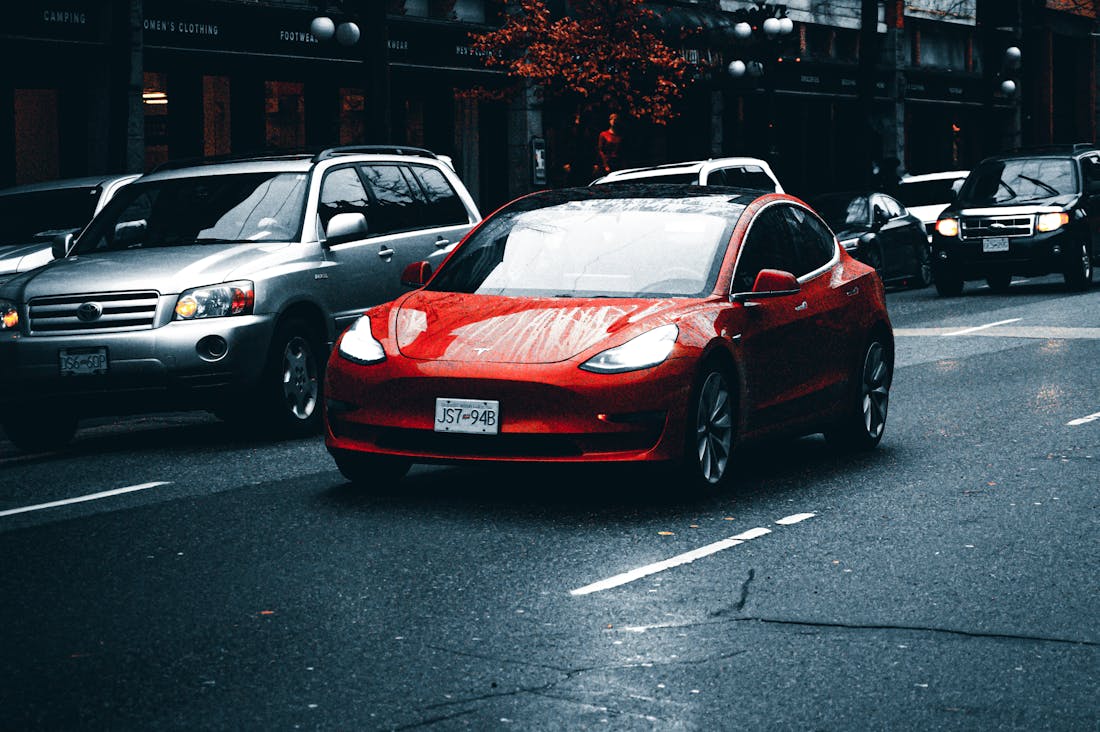The automotive industry is undergoing a transformative revolution, driven by rapid technological advancements that promise to redefine the way we think about transportation. Emerging innovations, from electric vehicles (EVs) and autonomous driving to smart connectivity and enhanced safety features, are not only reshaping vehicles but also reshaping our infrastructure and society. As we explore "The Future of Auto Technology," we delve into the cutting-edge developments that are propelling the industry forward, examining how these advancements are enhancing mobility, sustainability, and the overall driving experience for consumers around the globe. Join us on this journey into a future where technology and transportation converge seamlessly.

Electric Vehicles and Sustainability
Electric vehicles (EVs) represent a significant stride toward sustainability in transportation, offering a cleaner alternative to traditional gasoline-powered cars. By utilizing electric power, these vehicles contribute to reducing greenhouse gas emissions and dependency on fossil fuels, which are major contributors to climate change. The shift toward EVs supports the transition to renewable energy sources, especially as charging infrastructure increasingly incorporates solar and wind energy. However, sustainability extends beyond just the zero-emissions operation of EVs; it also involves responsible sourcing of materials, efficient battery recycling processes, and minimizing the carbon footprint associated with manufacturing. Ultimately, electric vehicles are a pivotal component of a broader strategy to create a more sustainable and environmentally friendly transportation system, addressing the urgent need for climate action.

The Rise of Autonomous Driving
The rise of autonomous driving marks a transformative shift in transportation technology, characterized by rapid advancements in artificial intelligence, sensor technology, and machine learning. Initially a concept confined to science fiction, self-driving vehicles are now becoming a reality, with major automotive manufacturers and tech companies investing heavily in research and development. Key benefits of autonomous driving include enhanced safety, reduced traffic congestion, and increased accessibility for individuals unable to drive. As regulatory frameworks evolve and public acceptance grows, the integration of autonomous vehicles into everyday life is anticipated to revolutionize urban planning and reshape the future of mobility, creating smarter, more efficient cities.

Connected Cars and Technology Integration
Connected cars represent a significant evolution in automotive technology, seamlessly integrating advanced communication systems that enhance vehicle performance, safety, and user experience. By leveraging the Internet of Things (IoT), these vehicles can communicate with each other, infrastructure, and cloud services, enabling real-time data exchange. This connectivity allows for features such as navigation updates, remote diagnostics, and over-the-air software updates, improving vehicle functionality and user convenience. Moreover, safety is greatly enhanced through systems like adaptive cruise control, collision avoidance, and emergency response services, which utilize real-time data to react to road conditions and driver behavior. As technology integration continues to evolve, the potential for autonomous driving becomes more tangible, promising a future where connected cars significantly reduce accidents and traffic congestion, ultimately transforming urban mobility and reshaping our transportation landscape.
The Role of Artificial Intelligence in Auto Innovation
Artificial Intelligence (AI) is revolutionizing the automotive industry by enhancing vehicle performance and user experience. From predictive maintenance to personalized driving experiences, AI algorithms analyze vast amounts of data to optimize vehicle operations. For instance, AI can anticipate when a vehicle will require maintenance, thus preventing breakdowns and reducing repair costs. Furthermore, AI powers advanced driver-assistance systems (ADAS) that improve safety features like lane-keeping assistance and automatic emergency braking. As AI technology continues to evolve, its integration into automotive design will lead to smarter, safer vehicles that adapt to individual drivers and their preferences, further transforming transportation.
The Future of Mobility: Urban Air Mobility and Drones
Urban air mobility (UAM) is emerging as an innovative solution to address the increasing challenges of urban congestion and pollution. Envisioned as a network of airborne vehicles, UAM aims to facilitate efficient transportation above crowded city streets, utilizing electric vertical takeoff and landing (eVTOL) technology. Companies are racing to develop drones capable of carrying passengers and cargo, with trials already taking place in several cities around the world. This shift towards aerial transport not only promises to alleviate traffic but also supports sustainability goals by reducing ground-level emissions, enhancing the overall efficiency of urban transportation systems.
The Importance of Cybersecurity in Connected Vehicles
As vehicles become more connected, the importance of cybersecurity in the automotive sector cannot be overstated. With advanced connectivity comes the risk of cyber threats that could compromise vehicle safety, privacy, and functionality. Manufacturers are now prioritizing robust cybersecurity measures to protect vehicles from hacking and unauthorized access. This includes implementing multi-layered security protocols, regular software updates, and real-time monitoring systems that can detect potential threats. As the automotive landscape becomes increasingly digital, establishing trust in connected vehicles will be pivotal in ensuring consumer confidence and driving further adoption of innovative automotive technologies.
The Shift Towards Shared Mobility Solutions
Shared mobility solutions are reshaping the transportation landscape by providing alternatives to traditional car ownership. Ride-sharing services and car-sharing platforms are gaining popularity, particularly among urban dwellers who prioritize convenience and cost-effectiveness. This shift not only reduces the number of vehicles on the road but also contributes to lower emissions and less traffic congestion. Additionally, shared mobility promotes social interaction and community engagement, as users connect with others during rides. As cities continue to adapt to these emerging trends, integrating shared mobility into urban planning will be crucial for creating sustainable transportation ecosystems that meet the needs of diverse populations.
AI-Assisted Content Disclaimer
This article was created with AI assistance and reviewed by a human for accuracy and clarity.